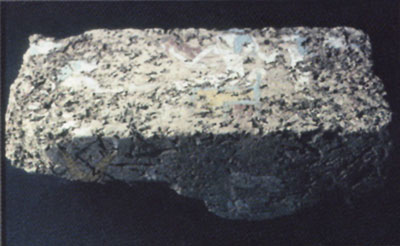In 2001 we discovered a unique object for Egyptian archaeology in the mayoral residence at South Abydos—a polychrome magical birth brick painted with childbirth-related imagery. Egyptologists have long known that it was customary to position special bricks (meskhenet) to support a woman squatting during the delivery of her baby. But while the notion of the birth brick was symbolized in divine form by the goddess Meskhenet, this was the first discovery of an actual birth brick.

The Abydos birth brick is an unfired mud-brick measuring 36 cm in length. Its sides bear beautifully rendered images of gods and demons known from another class of Middle Kingdom magical object—decorated ivory wands with iconography associated with the protection of children against threatening forces. These magical images invoked the myth of the defense of the baby sun-god Re as he was reborn every day on the eastern horizon. Such wands were meant to transfer divine protection to the human child during birth.
The birth brick also shows a scene of a mother and newborn sitting on a throne. Assisted by two figures and flanked by images of the goddess Hathor depicted atop tree branches, this scene appears to constitute a two-dimensional visual spell to invoke Hathor as well as to symbolically transfigure the mother into an incarnation of Hathor at the moment of birth. This rich iconography suggests the importance of two-dimensional magical imagery which functioned in combination with spoken magical spells and ritual actions during birth.

Although the Abydos brick is currently a unique find, it may be an example of a type of object that was once widespread in ancient Egyptian towns and cities. The production and decoration of meskhenet bricks for expectant mothers may have been an important part of the life of communities such as Wah-Sut during the late Middle Kingdom.
